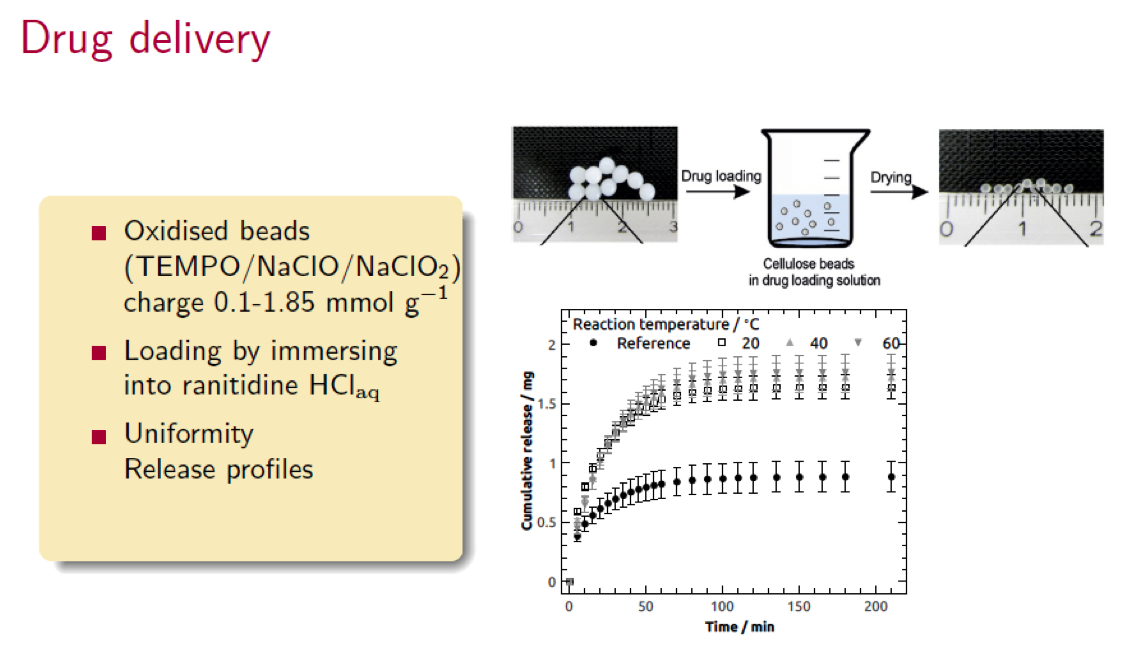Cellulose beads were prepared from water-based solvent and oxidised by modified Anelli’s reaction at 20– 80∘C80∘C for 2–48 h (Fig. 1). The maximum amount of anionic groups (AGs) was 1.85mmolg−11.85mmolg−1 . The distribution of AGs was verified by absorption of cationic dyes and imaging with confocal fluorescent microscopy. Structural changes were studied spectroscopically and with electron microscopy. Oxidation of the beads drastically increased the swelling capacity of air-dried beads. Uptake of model drug was more than doubled in never-dried beads. This is due to the changes in pore size distribution, mainly opening and widening of the closed pores and narrow cavities. Release profiles of the drug were studied at physiological pH of 7.4 and showed a controlled release rate independently of the amount of the drug encapsulated and amount of AGs.
Jani Trygg, Emrah Yildir, Ruzica Kolakovic, Niklas Sandler, Pedro Fardim Cellulose 2014, Volume 21, Issue 3, pp 1945–1955
